Crape Myrtle Trees For Sale
Georgia Tree Farm offers many types and sizes of Crape Myrtle trees. Fifteen Gallon Crape Myrtle Trees are a common size most people start with. Crape Myrtles in a 15 gallon container generally weigh about 60-70 pounds each, and are not to hard to handle. When planting a 15g crape myrtle, you will need to dig a hole about 2 feet wide and about one foot deep to plant correctly.
Large Crape Myrtle Trees
Field grown or also known as ball and burlap trees require a little more experience to handle. 10 to 12 foot tall crape myrtle trees are generally harvested in a 28 inch to a 30 inch ball and burlap root ball. These size trees can weight 400 – 600 lbs. Small equipment such as a bobcat skid loader, or a mini excavator may be required to transport and install this size trees.
A Grower’s Guide to the Crape Myrtle
Did you find Crape Myrtle trees for sale? If so, great! You are well on your way to a beautiful and colorful landscape. The Crape Myrtle tree or shrub is available in several selections, from the Muskogee Crape Myrtle tree to the White Crape Myrtle tree, each with its unique characteristics. The common Crape Myrtle is small to medium in size, deciduous in nature, and branchy with colorful flowers. Crape Myrtle trees are often multi-stemmed and dense, with showy, crepe-like flowers from spring to fall. Crape Myrtle tree colors span from pink to white and purple, with fresh, spring green leaves.
Perfect for USDA hardiness zones 6-7 depending on the cultivar, this cold-hardy plant is long-lasting, requiring little to no maintenance. When cared for properly, Crate Myrtles provide year-round interest and serve as excellent companions for your landscape. The Crape Myrtle is a resilient breed and can be planted practically year-round. Whether you choose a Dynamite Crape Myrtle tree, Natchez Crape Myrtle tree, or Red Crape Myrtle tree, you need to prepare to care for your new trees. Luckily, we have all the Crape Myrtle tree facts and instructions on Crape Myrtle tree care necessary for their successful lives.
Care of Crape Myrtle Trees
Caring for a Crape Myrtle tree requires the typical maintenance needed by other trees. It must first be planted and established in acidic to slightly acidic soil with access to full sun. Crape Myrtles thrive in well-drained soil that is clay, sandy, or loamy in its composure. Once your tree has grown, you should make a habit out of applying a high-nitrogen fertilizer each spring as the leaves appear. Otherwise, you only need to worry about pruning annually while the tree is dormant.
Crape Myrtle Tree Growth Rate
The average Crape Myrtle grows at a medium-fast speed, rising 2-3′ each year. But how tall will a Crape Myrtle tree grow? The size of a fully matured Crape Myrtle varies by the type. Naturally, a Dwarf Crape Myrtle tree is much smaller than the normal variation. Dwarf Crape Myrtle trees grow to a height of 4′ or less. A large Crape Myrtle tree can reach between 10 and 20′.
Pruning Crape Myrtle Trees
Knowing how to prune a Crape Myrtle is necessary to provide the proper care. Cutting back a Crape Myrtle tree allows it to produce new growth, without dead, diseased, or broken branches. In terms of how to cut back a Crape Myrtle tree, you want to get it done in early spring. Begin by cutting suckers from the bottom and getting rid of rubbing, diseased, or otherwise damaged branches. Continue by gradually removing side branches from the main base as it grows taller, careful not to leave singular or clustered stubs.
How to Transplant a Crape Myrtle Tree
The best time to move a Crape Myrtle is in dormancy. This period runs from the time the tree drops its leaves in the fall. In general, the best time to transplant is in late winter. If you plan to transplant a Crape Myrtle, the following steps will guide you through a successful move.
- Keep your tree well-watered until you transplant
- Begin by digging a hole 50% wider than the roots in full sun
- Dig up and secure the Crape Myrtle root ball in burlap
- Transplant your Crape Myrtle, placing it about 1-2″ above ground level
- Open your burlap and back-fill the hole with topsoil
- Flood the area with water to release any trapped air
- Mulch your Crape Myrtle once settled and add water when the soil is dry to touch
Landscaping Around Crape Myrtle Trees
From the Black Diamond Blush Crape Myrtle tree to the Lavender Crap Myrtle tree – landscaping with the genus boasts many fun and colorful options. Many companion plants grow well in Crape Myrtles’ vicinity—including various varieties of the Crape Myrtle itself. Perhaps the best choice is the Hosta because it likes shade and is easy to maintain. Otherwise, Dwarf Crape Myrtle trees or shrubs are perfect. If you would prefer to plant other summer perennials, the following will do your landscape much aesthetic justice.
- Perennial Hibiscus
- Lantana
- Coreopsis
- Coneflowers
- Daylillies
- Agastache
- Gaillardia
Where to Buy Crape Myrtle Trees
If you are interested in obtaining any number of Crape Myrtle trees, a quick search along the lines of Crape Myrtle trees for sale Lowe’s will turn up an array of local results. From local nurseries to large home good and repair shops like Home Depot, the sky is the limit.
Should I Worry About Bugs on Crape Myrtle Trees?
Crape Myrtles, scientifically known as Lagerstroemia Indica, is essentially a trouble-free species. The most common problems encountered when growing Crape Myrtle trees is powdery mildew, Cercospora leaf spot, Japanese Beetles, Sooty mold, and Aphids. Luckily, many insecticides are designed for use on the Crape Myrtle, including Neem oil, Lambda Cyhalothrin, Permethrin, Acephate, and many more.
Do Crape Myrtle Trees Have Invasive Roots?
In short, no, Crape Myrtle tree root systems are not invasive. Crape Myrtle roots are shallow and fibrous, reaching horizontally up to three times the canopy size. In turn, it is wise to keep Crape Myrtles at least 5-10′ away from the sidewalks.
Training Crape Myrtle into Tree
If you are looking to train your Crape Myrtle into a tree, start by finding one strong trunk growing straight and upright. Next, remove all the other shoots. If necessary, stake the trunk to keep it standing upright. Finally, remove all branches from the lower part of the stem, exposing one-third to one-half of the trunk.
What Kind of Fertilizer for Crape Myrtle Trees?
Several fertilizers work well with Crape Myrtles, such as 8-8-8, 10-10-10, or 16-4-8. Be careful not to over-fertilize trees as it can cause overgrowth and a lower rate of blooms.
Enjoy the Diverse Beauty of the Crape Myrtle Tree
The Crape Myrtle is a unique species with plenty of attractive options. This cold-hardy plant thrives in zone 6 and can be used as a tree or shrub, depending on your intentions. If you are interested in landscaping with Crape Myrtle trees, you are in luck! With so many low-maintenance options available, you can master your landscape with trees that impress year-round.
Types of Crape Myrtle
As previously mentioned, there are many varieties of Crape Myrtle trees. Small to large Crape Myrtle tree varieties, color, shape, and size differ, adding varying aesthetic value to landscapes. The following are a few commonly known cultivars of the Crape Myrtle.
Natchez Crape Myrtle
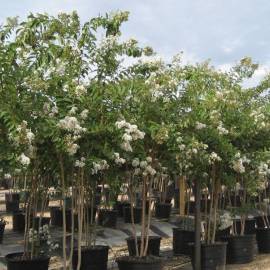
Muskogee Crape Myrtle
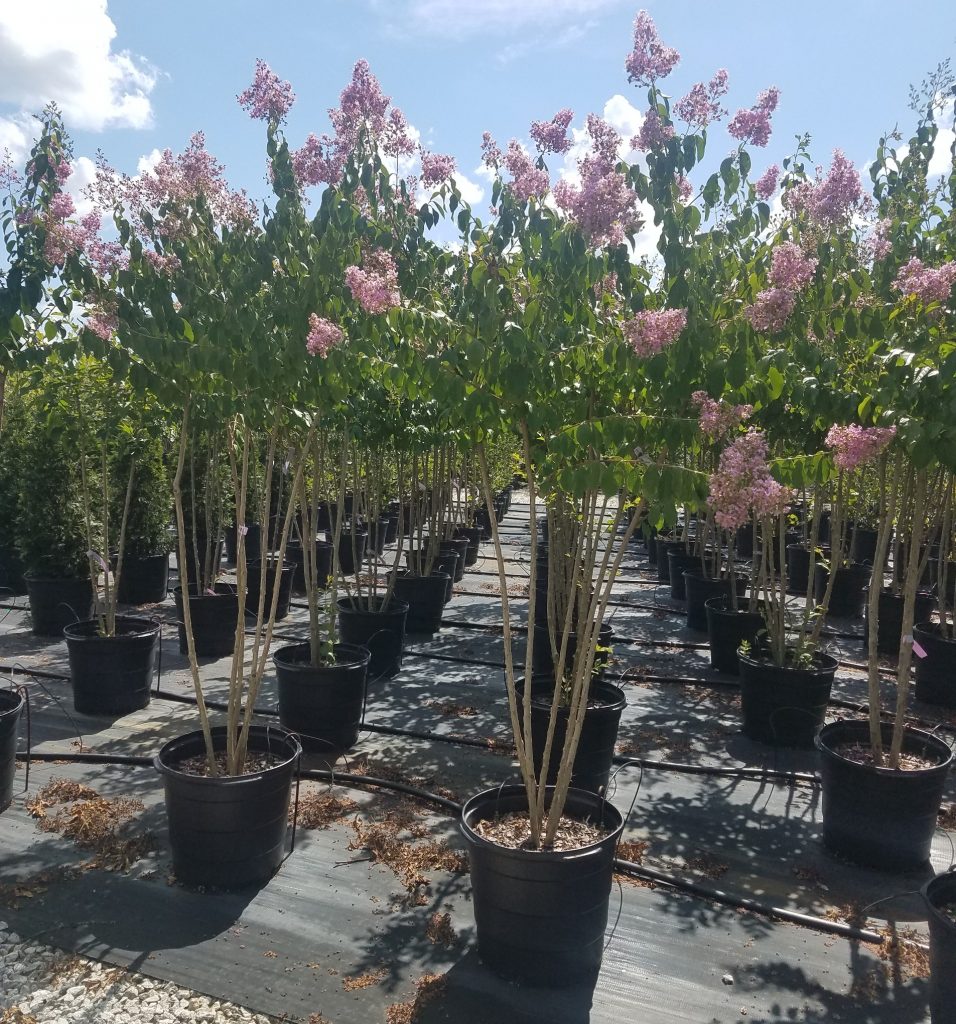
Tuscarora Crape Myrtle
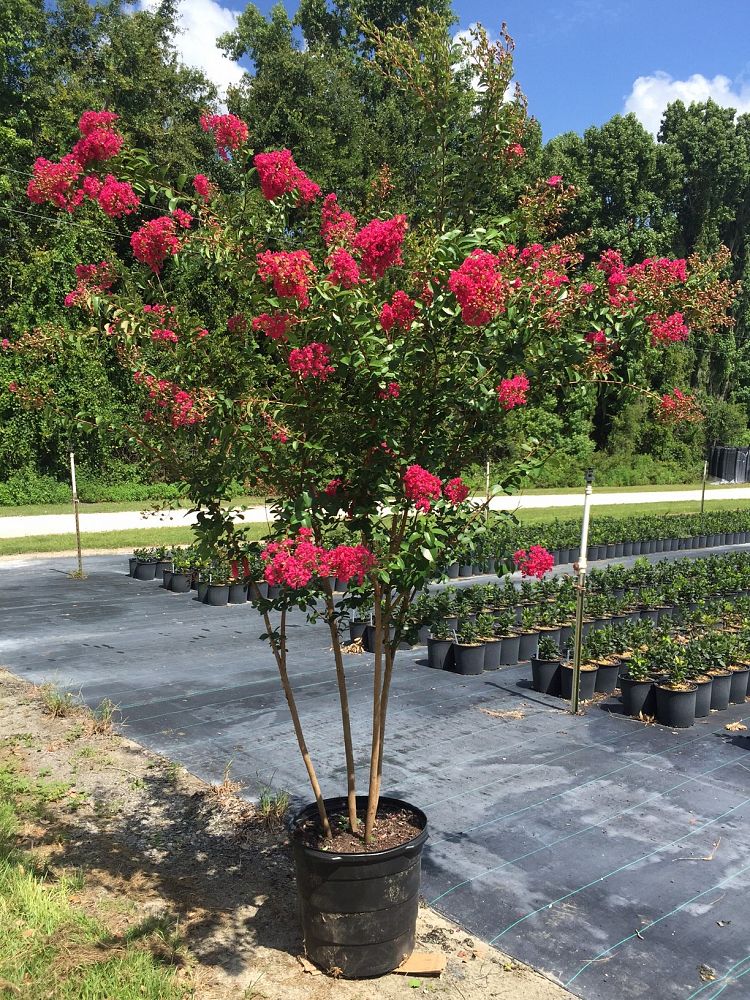
Tonto Crape Myrtle
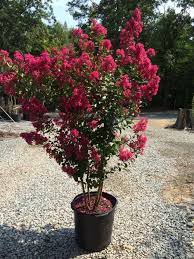
Sioux Crape Myrtle
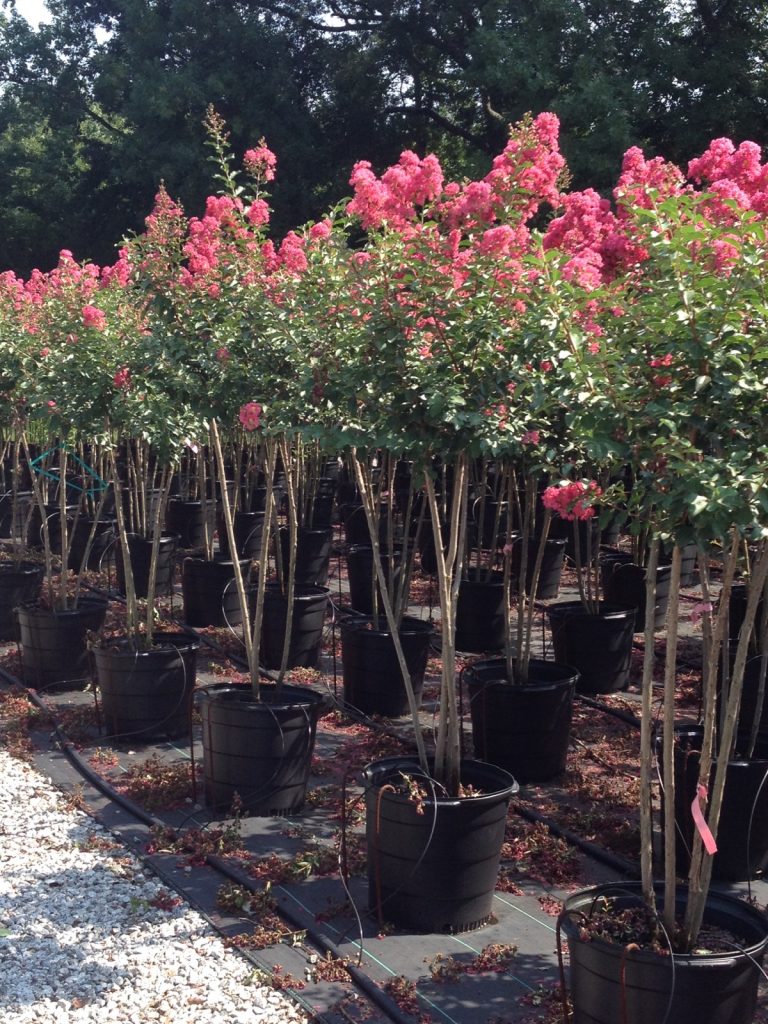
If you have questions, or need pricing on another type or size Crape Myrtle Tree, don’t hesitate to reach out to us. We are happy to discuss pricing, delivery, and installation options. Georgia Tree Farm offers wholesale pricing and Quantity Discounts on all types of Trees.
Contact Us Today!
[wpdevart_forms id=”1″]